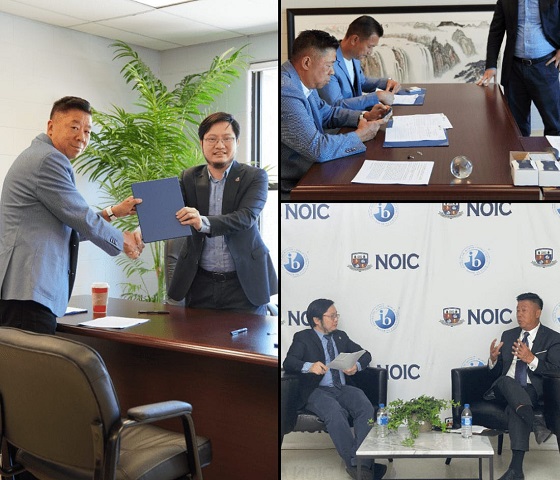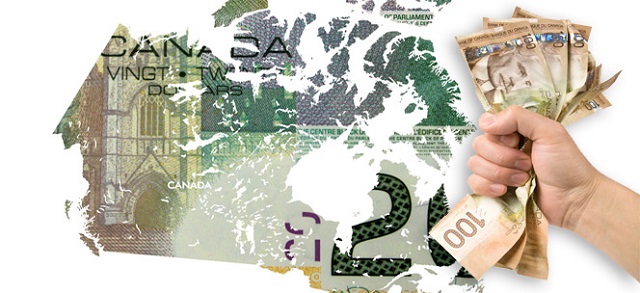2025 Federal Election
Election 2025: The Great Rebrand
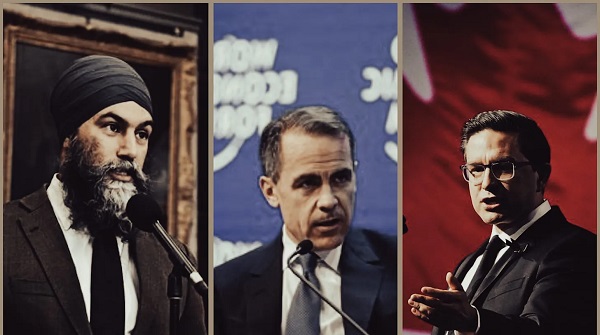
Same Swamp, New Faces — A Banker, A Backup Dancer, and the Guy Who Called It All Along
So yesterday in Canada, something remarkable happened. The Liberals—yes, those Liberals—called a snap election, and if you’ve been even half-awake over the past decade, you already know what that means. When the Liberal Party in Canada says “emergency,” it never actually means “emergency.” It means opportunity. For them. And for them only.
Mark Carney, the freshly minted Prime Minister—and, let’s be honest, Justin Trudeau with a slightly different haircut—stood at a podium yesterday morning and announced to Canadians that they were in the middle of the “most significant crisis of our lifetimes.” Was he talking about inflation? Out-of-control immigration? Broken infrastructure? Nope. He was talking about Donald Trump. Again.
That’s right. According to Carney, who just last year was managing money for billionaires and holding court at Davos, Canada is on the verge of collapse because Donald Trump slapped tariffs on steel and aluminum. And so naturally, Carney’s solution wasn’t to meet with Trump, or negotiate, or push back through diplomacy—it was to dissolve Parliament and call an election. Because, he says, “President Trump claims that Canada isn’t a real country. He wants to break us so America can own us. We will not let that happen.”
Now, pause and think about that. Not only is that an outright cartoon version of reality, it’s delivered in exactly the same breathy, fake-dramatic, overly rehearsed tone that Canadians have been forced to endure from Justin Trudeau for nearly a decade. You could close your eyes, hear Carney speak, and think—oh, there’s Justin again. The same cadence. The same halting pauses. The same sanctimonious, over-coached delivery. Gag. They’re not even trying to sound different.
And that’s what makes this so offensive. They took Trudeau’s empty suit, shoved in another Bay Street insider, gave him the same script, and now they’re pretending it’s a new era. Spoiler: it’s not. It’s just the same swamp, rebooted with a different narrator.
Now, let’s talk about what Carney actually did in his first week as Prime Minister. Because it’s telling. He kicked out Chandra Arya, a sitting Liberal MP who had the audacity to run in the leadership race. Arya has been in Parliament for nearly a decade, and just like that, he was removed by a secretive party committee. Why? Carney wanted the Nepean riding for himself. And now he’s running there. No nomination contest. No vote. No accountability. Just a velvet-glove power grab by Canada’s ruling class. Trudeau couldn’t have done it better. Or, frankly, more shamelessly.
And then—this is the best part—Carney starts copying Conservative policies word for word. You can’t make this up. Conservatives said axe the carbon tax? Carney axes it. Conservatives said remove GST on new homes? Carney removes it—for first-time buyers, of course, to maintain the illusion of difference. Conservatives opposed the capital gains tax hike? Carney kills the increase and says it’s to “reward builders for taking risks.” That’s a quote. From Trudeau’s former economic advisor.
So just to recap: they prorogued Parliament to hold an internal leadership race during what they now claim is a national economic emergency. Then they oust a sitting MP to parachute their new leader into a safe seat. Then that leader—who spent years on the record defending carbon taxes, wealth taxes, capital gains increases, and every other progressive scheme—miraculously converts to Poilievre-ism in under ten days. All while telling Canadians that he represents stability.
It’s insulting. And it’s obvious. But it only works if Canadians forget how we got here. If they forget that this is the same party that spent the last ten years telling them inflation wasn’t real, that housing was affordable if you just tried harder, and that freedom of expression was a threat to democracy.
Carney stood there and said, “We are stronger together,” and I nearly choked. Because you know who else said that, constantly, while dividing the country by class, speech, region, and vaccination status? Justin Trudeau.
Mark Carney isn’t here to save Canada. He’s here to save the Liberal Party from the consequences of its own failures. And if they cared this much about trade with the U.S., they wouldn’t have shut down Parliament to hold a leadership contest. They would have done their jobs.
Conservatives: Because Copying Us Is All the Other Parties Have Left
Because not even 12 hours later, Pierre Poilievre walked onto a stage in Toronto—and it wasn’t just any event. The room was packed. And I don’t mean in the polite, stage-managed “standing room only” kind of way that the media uses to make a half-empty gymnasium look respectable. I mean jammed. Wall to wall. Flags waving, signs flying, real energy. There was no teleprompter glass, no softly lit hardwood floor and marble backdrop. Just thousands of people, jammed into a venue, ready to hear a man speak who—love him or not—is not pretending to be someone else.
And that’s what stood out. Because just a few hours earlier, the guy we’re supposed to believe is “Canada’s new leader” was up there imitating Trudeau like he was auditioning for a Heritage Minute. Meanwhile, Pierre Poilievre stepped up to the mic in front of a roaring crowd and gave the kind of speech you only give when you know the system is broken—and you’re done pretending it’s not.
He wasted no time. “They are replacing Justin Trudeau with his economic advisor and handpicked successor,” he said, with just the right amount of disbelief. “They are the same Liberals—with the same ministers, the same MPs, the same advisors, the same policies—and even today, making the same promises they’ve been breaking for over ten years.” And that was the shot. Because it’s true. You can swap the man at the podium, but if the script is the same, what exactly has changed?
And this crowd—Toronto of all places, once assumed to be off-limits for conservatives—ate it up. Not because Poilievre was delivering poetry. Not because he was spinning fantasy. But because he was naming the thing everyone else is afraid to say: that Carney is a continuation, not a correction. That the Liberals didn’t bring in a fixer—they brought in the architect of the mess.
He dug in hard on the hypocrisy. Carney signs a paper saying he’s axing the carbon tax, but in the next breath, he’s introducing an industrial carbon tax—one that, as Poilievre pointed out, will slam Canadian steel, fertilizer, aluminum—basically anything that still gets built in this country. And while Carney was trying to convince reporters that “big companies are not producing things that Canadians consume,” Poilievre rattled off a list—cars, microwaves, dishwashers, ovens, tools. “Do you use any of those things?” he asked the crowd. The answer was obvious.
This wasn’t some campaign rally gimmick. He was hitting on what people actually feel every time they check out at the grocery store, or look at their gas bill, or walk past an empty lot that could’ve been housing, but isn’t. And he tied it back—not to abstract ideology, but to specific betrayal. “Only six days after Trump threatened tariffs on our country,” he said, “Mark Carney moved his company’s headquarters to New York. Trump’s hometown.”
It landed because it was real.
He even took a swing at the latest attempt by Liberals to soft-peddle their record: making election promises they’ve already broken in the past. “Mr. Carney,” he said, “was literally repeating the election promise about income tax that Justin Trudeau and the Liberals broke ten years ago.” The same people. The same spin. “Same advisors, same strategic planners, same scriptwriters,” he said. “Even the same Gerald Butts.”
He mocked the contradictions. Carney as the man who opposed Canadian pipelines while his company invested billions in foreign fossil fuels. Carney as the guy calling for economic patriotism while quietly shifting money, assets, and power out of Canada. And for a man whose supporters frame him as a high-minded global statesman, Poilievre made him look like something much more familiar: just another Liberal insider, too comfortable to care about consequences.
Now, let’s be clear. This wasn’t some flawless sermon. Poilievre still leans heavily into slogans. “Bring it home.” “Common sense.” “Canada First.” But that didn’t matter. Because what mattered was that the people in that room knew he wasn’t acting. They knew he was angry. And they are too.
You could feel it. And if this momentum holds, it’s not going to matter how many new faces the Liberals roll out. Canadians aren’t voting on charisma anymore. They’re voting on pain. On price tags. On broken promises. And right now, the guy they sent out to fix the mess is being called out—loudly—as the man who helped make it.
NDP: From Enabler to Opponent
So after a packed-out Conservative rally where Poilievre lit up the stage and torched the Trudeau–Carney regime for everything from exploding deficits to a carbon tax dressed up in new packaging, we got this. Jagmeet Singh, the man who kept Justin Trudeau’s tired, collapsing government on life support for nine years, suddenly wants you to believe he’s the resistance.
You almost have to laugh.
There he was, standing in front of a carefully arranged room—less electric, more echo chamber—launching a campaign not against the very government he propped up, but against the man he helped install.
Jagmeet Singh opened his speech with the usual acknowledgments and land statements, moved quickly into identity platitudes, and then took a sharp turn into fantasy: painting himself as the anti-establishment warrior who “fought for dental care,” “delivered pharmacare,” and “forced the government to act.”
But hang on a second—what government was that again?
Oh right. The one he kept alive through confidence votes, budget approvals, and joint legislative deals. The one that spent the last decade inflating the housing market, ballooning the deficit, and silencing dissent. The government of Justin Trudeau. Which, as of this month, is now the government of Mark Carney, Trudeau’s handpicked successor.
You see where this is going?
Singh stood on that stage slamming Mark Carney—saying “he can’t be trusted,” that he “helped banks and investors profit off the housing crisis,” and that “he’s spent his career working for billionaires.” All true. But where was that spine the last nine years when he was voting to keep those exact same people in power?
Let’s not forget: Singh voted in favor of Trudeau’s emergency powers during the trucker convoy. He backed the carbon tax increases. He played defense every time the Liberals stumbled through scandal, censorship bills, and failed green policies. If Mark Carney is the wrong man to lead, then so was Justin Trudeau—and Singh stood right behind both of them, nodding along and calling it “progress.”
Now he wants to pretend he’s the alternative?
At one point, Singh even called Carney’s Canada a “house with a leaky roof,” and Poilievre’s vision a “cracked foundation.” He said, “neither will hold up when the storm hits.” But here’s the thing—he built the first house, brick by brick, with Trudeau. And now he wants credit for warning that it’s collapsing.
He also claimed he’s “the only federal leader not endorsed by Trump or Elon Musk.” Which would be hilarious if it wasn’t so desperate. That’s not a policy position—it’s a cry for relevance. When your platform is crumbling, just scream “Trump” loud enough and hope no one asks how you voted in Parliament last month.
Bottom line? Jagmeet Singh wants to run against a government he enabled, a system he reinforced, and a crisis he helped fund. He can’t walk into this election draped in the orange cape of the working class while pretending his fingerprints aren’t all over the Liberal disaster Canadians are living through.
Final Thoughts
So here we are. The stage is set. The actors are in position. And Canadians—God bless them—are being asked to choose between three brands of nonsense, each more insulting than the last.
Option one: Justin Trudeau 2.0—Mark Carney. The Liberals’ idea of change is hiring the guy who advised the last one. If that sounds familiar, it should. It’s like firing the drunk pilot, then handing the controls to the guy who told him to hit the throttle. Carney spent his career bouncing between central banks and billion-dollar boardrooms, lecturing working people about “sustainability” while padding portfolios in Manhattan. But now—suddenly—he’s wearing rolled-up sleeves, talking about “the middle class,” and reading lines from Pierre Poilievre’s economic playbook like he just discovered inflation existed. The best part? He delivers it all in that same Trudeau tone—breathy, performative, like he’s always on the verge of tears because he just cares so much. Gag. They didn’t even give him a new script. Just a new face, same puppet strings.
Option two: Jagmeet “I Have No Shame” Singh. This guy. He spent nine years keeping the Trudeau government alive—nine years voting for their budgets, defending their scandals, rubber-stamping their lockdowns, mandates, censorship bills, and everything else that turned this country upside down. But now that the Liberals slapped a different face on the same failing government, Singh wants you to believe he’s suddenly the resistance. Like we all forgot he was Trudeau’s human crutch in Parliament. “We delivered dental care,” he says. Buddy, you delivered Trudeau. Over and over again. The only thing Jagmeet Singh has resisted is accountability.
And now he wants to tell you Carney can’t be trusted? That he’s a Bay Street elitist? You voted for him. You kept his party in power. Spare us the late-stage conversion. You don’t get to spend nine years enabling a political dumpster fire and then run from the smoke like you just smelled it. It’s pathetic. And more importantly, it’s insulting.
Option three: Pierre Poilievre. Not perfect. Not polished. But also? Not pretending. He’s not fake crying at a podium. He’s not reciting script lines passed down from Liberal focus groups. He’s not flipping on policy every 72 hours. He’s telling Canadians the system is broken, and he’s naming names. He’s naming Carney. He’s naming Trudeau. He’s naming the insiders, the lobbyists, the international finance guys who’ve been running this country like their own ATM for the last decade.
And what are the Liberals doing? Stealing his policies. Axe the tax? Carney now says he’ll axe it. GST off homes? Carney’s on board. Capital gains hike? Poof—canceled. You know what that tells you? They know what they did. They know he’s right. And instead of admitting it, they’re plagiarizing the guy they called “dangerous.”
So what are we voting for?
We’re voting to find out just how stupid they think we are.
Because this isn’t just an election—it’s a referendum on whether Canadians have the memory span of a fruit fly. Whether we’re going to look at a Trudeau clone in a tailored suit and say, “Yes, that’s different.” Whether we’re going to let the guy who voted for all of it now tell us he’s the only one who can fix it. And whether we’re going to believe, for even one second, that the party that gave us this mess deserves one more try.
Subscribe to The Opposition with Dan Knight .
For the full experience, upgrade your subscription.
2025 Federal Election
AI-Driven Election Interference from China, Russia, and Iran Expected, Canadian Security Officials Warn
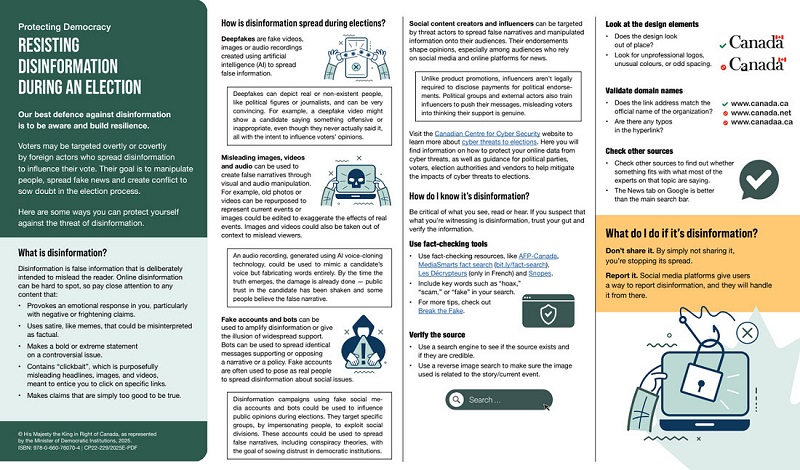
 Sam Cooper
Sam Cooper
Canada’s election monitoring agency is warning that foreign powers, led by the People’s Republic of China, are expected to target Canadian politicians and political parties in the coming weeks using increasingly convincing AI-generated cyberattacks—part of a broad set of malign strategies that could be impacting the 2025 federal election.
The warning came Monday from the Security and Intelligence Threats to Elections (SITE) Task Force, whose officials detailed how foreign state actors, including China, Russia, and Iran, are likely to use so-called “hack-and-leak” operations, generative AI, and social engineering to undermine confidence in Canada’s democratic process.
“Canadian politicians and political parties are likely to be targeted by threat actors attempting to hack into their systems, steal information, and leak that information,” said an official from the Canadian Centre for Cyber Security, a branch of the Communications Security Establishment. “We assess that AI is making social engineering attacks more personalized, pervasive, and harder to detect.”
Officials cited a 2024 U.S. Department of Justice indictment that charged Iranian-linked cyber actors with stealing and leaking campaign material belonging to U.S. political figures, including to rival campaigns. The case, SITE said, was emblematic of an evolving threat model now being deployed globally.
“Increasingly, nation states are incorporating AI into their cyber operations,” SITE warned. “Generative AI tools enable cyber threat actors to create realistic audio and video content impersonating trusted individuals or deepfakes.”
These tools, SITE added, are being used to craft emails that mimic natural human writing, using convincing grammar and tone to fool even seasoned professionals—including campaign staff, journalists, and elected officials.
SITE said that the cyber programs of China, Russia, and Iran represent the greatest strategic cyber threats to Canadian democracy during the current election. Among them, the PRC was flagged as the most persistent in targeting Canadian political figures, public officials, and institutions.
“The PRC regularly targets Canadian government networks and public officials to acquire information that will advance its strategic economic and diplomatic interests,” an official said. “This information is likely also used to support the PRC’s malign influence and interference activities against Canada’s democratic processes.”
SITE linked these activities to broader campaigns of transnational repression. Chinese cyber actors have been publicly tied to operations targeting Uyghur activists in Canada, as well as journalists and dissidents from Hong Kong and Taiwan. The tactics include spyware, phishing campaigns, and digital tracking.
“PRC actors very likely facilitate transnational repression by monitoring and harassing these groups online,” an official added, noting that Beijing has labeled Uyghurs, Falun Gong practitioners, Tibetans, and pro-democracy advocates among its so-called ‘five poisons.’
Russia and pro-Russian non-state actors were described as the most aggressive actors globally over the past two years in targeting elections, using cyberattacks and information warfare to influence outcomes and undermine faith in democratic institutions.
SITE officials emphasized that the task force is actively monitoring signals intelligence, cyber intrusion attempts, and online manipulation in real-time — and will issue public alerts if they identify specific incidents linked to foreign actors.
But the challenge, they said, is that these operations increasingly blend foreign state capabilities with domestic narratives and influencers, making detection and attribution more difficult.
“The environment is rapidly evolving,” the official concluded. “We are asking everyone — from parties to voters — to be vigilant in the face of increasingly deceptive and technologically sophisticated foreign interference.”
Two weeks ago, Canada’s Security and Intelligence Threats to Elections (SITE) Task Force identified a sophisticated PRC information campaign targeting Chinese-language social media in Canada. On March 10 and March 25, the WeChat account Youli-Youmian, linked to Chinese Communist Party propaganda efforts, shared widely amplified posts portraying Mark Carney in a highly favorable light.
One post, titled “The US encounters a ‘tough guy’ Prime Minister,” framed Carney as standing up to Donald Trump’s tariff threats.
At the SITE briefing Monday, The Bureau questioned whether the task force would investigate the Carney campaign’s “ButtonGate” scandal as potential domestic election interference—especially given the operation echoed a PRC disinformation playbook from 2021 that falsely depicted the Conservatives as Trump-style extremists. The question also raised whether SITE had the capacity to examine any crossover between this Liberal narrative and a broader foreign campaign.
A SITE spokesperson replied cautiously: “National security agencies take any attempt to undermine our democracy really seriously… Not all disinformation is foreign-backed… but SITE is committed to informing Canadians when emerging issues can be linked to foreign state actors.”
Alongside its public briefing Monday, the SITE Task Force released a visual guide warning Canadians about how disinformation spreads during elections.
The schematic emphasizes vigilance, encouraging Canadians to scrutinize domain names, design inconsistencies, and suspicious endorsements. It also urges users to verify sources, use fact-checking tools, and avoid sharing unverified content.
The Bureau is a reader-supported publication.
To receive new posts and support my work, consider becoming a free or paid subscriber.
Invite your friends and earn rewards
2025 Federal Election
Euthanasia is out of control in Canada, but nobody is talking about it on the campaign trail
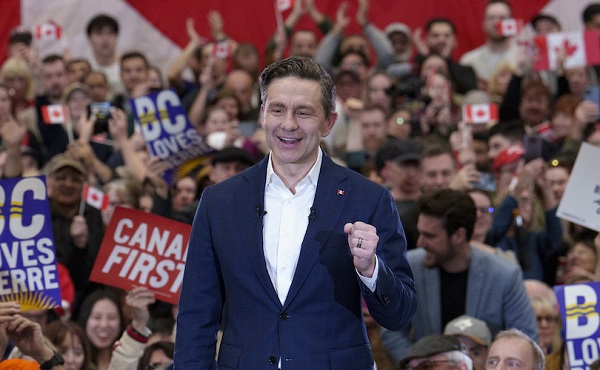
From LifeSiteNews
While refraining from campaigning on the issue, Poilievre, to his credit, has said previously that he will ‘scrap’ the Liberal’s plan of expanding euthanasia to the mentally ill ‘entirely.’
Canada’s euthanasia regime should be one of the key election issues on the campaign trail, but thus far, there seems to be little interest in discussing the issue.
This despite the fact that last month, the United Nations Committee on the Rights of Persons with Disabilities took the stunning step of publishing a report calling on Canada to halt “Track 2 MAID,” stop the planned 2027 expansion of euthanasia to those suffering solely from mental illness, and reject “advance directives” for euthanasia.
Track 2 MAID was legalized in Canada in 2021, when a lower Quebec court ruled that restricting euthanasia to those with “reasonably foreseeable death” was unconstitutional and expanding eligibility to a wide range of Canadians suffering from various conditions. The floodgates opened; over 60,000 Canadians have died by euthanasia since legalization.
In fact, the vice-chair of the UN committee, at a hearing in Geneva, went so far as to ask a Canadian government representative how it was possible not to view Canada’s euthanasia regime as a “step back into state-sponsored eugenics.”
When Conservative leader Pierre Poilievre was asked on the campaign trail if his government would make any changes to Canada’s laws, he responded: “People will continue to have the right to make that choice, the choice for themselves. We are not proposing to expand medical assistance in dying beyond the existing parameters. That said, we also believe that we need better healthcare so that people have all sorts of options.”
Poilievre then pivoted to discussing his policies to fix Canada’s broken healthcare system, making it quite clear that this is an issue that he is not eager to discuss—likely because of high support for euthanasia in Quebec. Indeed, Dying with Dignity—Canada’s relentless and well-funded euthanasia lobby—has been releasing polling data designed to discourage politicians from addressing the issue, emphasizing public support for their agenda.
Rebecca Vachon of Cardus has a good breakdown of DWD’s data that highlights the truth of the old political adage that polls are often commissioned to shape public opinion rather than measure it:
Poilievre, to his credit, has previously made his position on euthanasia for mental illness crystal clear, voting for a Conservative bill to ban the practice and stating in February that, if elected, “We will revoke an expansion entirely.” Mark Carney, on the other hand, has made no statement on euthanasia whatsoever, which indicates that he is likely to carry on the Trudeau government’s policies, which are still in effect—including the planned 2027 expansion of euthanasia to those suffering solely from mental illness.
Indeed, in response to a request for comment on the United Nations Committee on the Rights of Persons with Disabilities report and recommendations from Canadian Affairs, Health Canada ignored the condemnation of Canada’s regime and instead simply reiterated the current framework—including the planned 2027 eligibility expansion. In summary, if the Liberals are re-elected at the end of this month, it is full steam ahead—and Canadians with disabilities will simply have to live (or die) with it.
Despite the Conservative Party’s clear disinterest in campaigning on the issue, the choice before Canadians is still clear. Make no mistake: Expanding euthanasia to those with mental illness would be one of the greatest national tragedies since the 1988 R v. Morgentaler decision. If you have found the stories of the past several years horrifying, remember: They are nothing compared to the stories that we will all be forced to read, and perhaps even experience, once a Liberal government begins to facilitate suicide for those suffering solely from suicidal ideation.
-
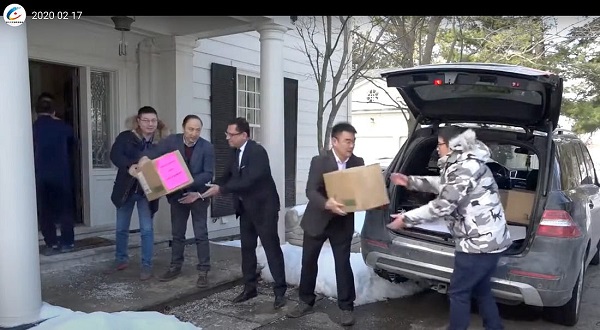
 2025 Federal Election2 days ago
2025 Federal Election2 days agoPPE Videos, CCP Letters Reveal Pandemic Coordination with Liberal Riding Boss and Former JCCC Leader—While Carney Denies Significant Meeting In Campaign
-

 2025 Federal Election2 days ago
2025 Federal Election2 days agoNo Matter The Winner – My Canada Is Gone
-

 2025 Federal Election1 day ago
2025 Federal Election1 day agoASK YOURSELF! – Can Canada Endure, or Afford the Economic Stagnation of Carney’s Costly Climate Vision?
-
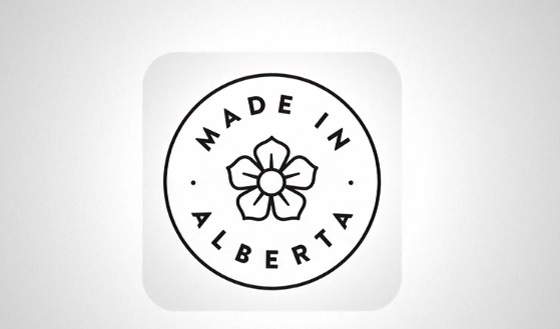
 Alberta1 day ago
Alberta1 day agoMade in Alberta! Province makes it easier to support local products with Buy Local program
-

 Alberta1 day ago
Alberta1 day agoProvince to expand services provided by Alberta Sheriffs: New policing option for municipalities
-
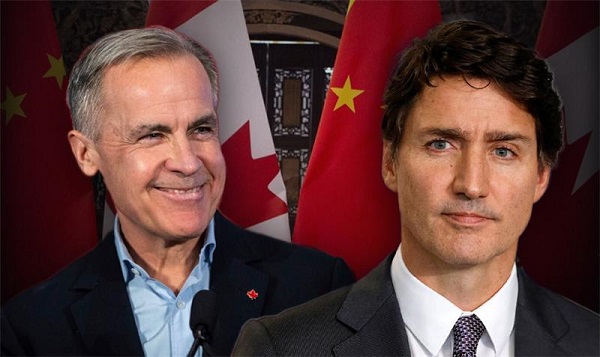
 2025 Federal Election1 day ago
2025 Federal Election1 day agoCSIS Warned Beijing Would Brand Conservatives as Trumpian. Now Carney’s Campaign Is Doing It.
-
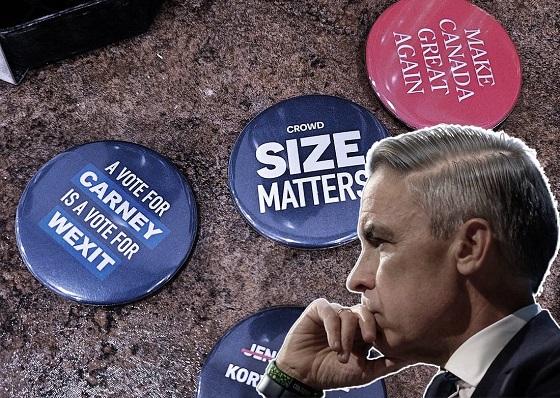
 2025 Federal Election1 day ago
2025 Federal Election1 day agoInside Buttongate: How the Liberal Swamp Tried to Smear the Conservative Movement — and Got Exposed
-
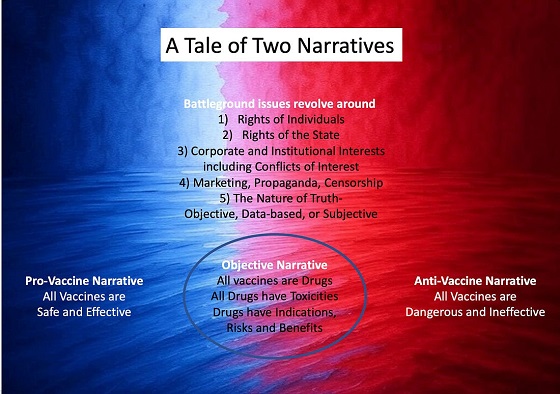
 Dr. Robert Malone22 hours ago
Dr. Robert Malone22 hours agoThe West Texas Measles Outbreak as a Societal and Political Mirror






